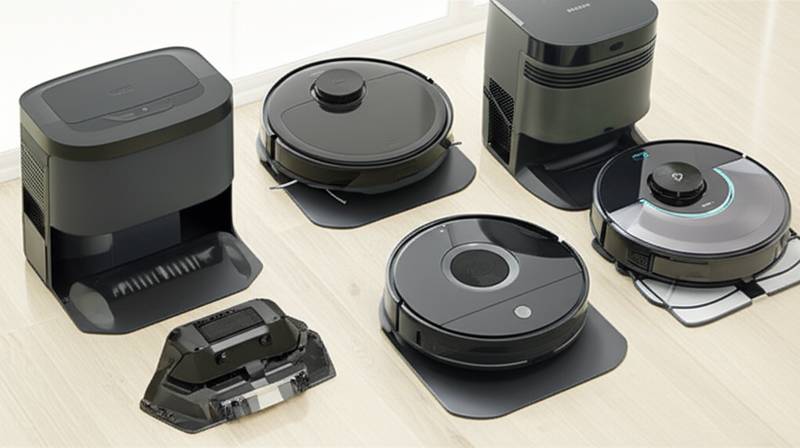Challenges of Maintaining Clean Floors
Busy schedules, shedding pets, or children who scatter crumbs make it difficult to keep floors pristine. Manual cleaning demands time and effort that many households lack. Fortunately, robot vacuums that vacuum, mop, and self-empty have entered the budget market, offering reliable automation without the high cost of premium models.
Selecting the right device under $300 requires careful evaluation. Not all affordable options perform equally; some lack sufficient power or navigation. The following sections highlight models that balance features and price effectively.
Evolution of Affordable Robot Cleaners
Early robot vacuums provided basic suction with random paths, often missing areas. Modern hybrids integrate mapping technology, mopping capabilities, and self-emptying docks. These advancements allow devices to handle diverse floor types autonomously.
In the sub-$300 range, expect core functionalities like app-based scheduling and voice integration. Users benefit from reduced maintenance and consistent results. Focus on devices with proven durability to ensure long-term value.
Essential Features for Budget Models
Budget robot vacuums that mop and self-empty prioritize practicality over luxury. Prioritize these attributes for effective performance:
- Suction strength of at least 2000 Pa to lift debris from carpets and hard floors.
- Dual modes for vacuuming and mopping, with adjustable water levels.
- Self-emptying dock that stores debris for 7-10 days.
- Smartphone app for customizing schedules, zones, and cleaning intensity.
- Battery life exceeding 100 minutes for thorough coverage in average homes.
Opt for models with systematic navigation, such as gyroscope or camera-based systems, to avoid inefficient random patterns. Test app compatibility with your devices during purchase.
Recommended Models Under $300
Three models stand out for their combination of features, reliability, and value. Each suits different home layouts and needs.
Lefant M1 Vacuum-Mop Combo ($239)
This compact unit excels in apartments with mostly hard floors. It delivers 2200 Pa suction and includes a 150ml water tank for mopping light messes. Integration with Alexa and Google Assistant enables hands-free operation, while the self-emptying base manages up to 10 days of dust.
Advantages: Small footprint for tight spaces, low noise levels under 65 dB, effective on pet hair.
Limitations: Basic navigation may overlook edges; best for open layouts.
Yeedi Vac Station ($299)
Positioned at the upper budget limit, this model provides 3000 Pa suction and camera-assisted mapping for efficient room division. The mopping pad attaches easily and tackles daily spills on tile or laminate. The dock's 400ml bag reduces emptying frequency.
Advantages: Accurate path planning saves time, robust build withstands frequent use.
Limitations: Mopping lacks scrubbing pressure; pretreat stubborn spots manually.
Dreametech D9 Max ($279)
Suited for mixed flooring, this vacuum reaches 4000 Pa suction and employs LiDAR for precise mapping across multiple levels. It supports map storage and no-go zones via the app. Bundles often include the self-emptying base within budget.
Advantages: Superior navigation avoids obstacles, handles transitions between surfaces seamlessly.
Limitations: Base may require separate purchase; verify bundle availability.
Optimizing Performance and Routine
Prepare your space by clearing floors of cords and clutter to enhance navigation. Run cycles during absences for uninterrupted operation. In pet-heavy homes, daily short sessions prevent hair accumulation.
Maintain efficiency by cleaning sensors weekly and replacing filters every two months. Use distilled water in mop tanks to avoid mineral buildup. Adjust settings per floor type: increase water for tiles, decrease for wood to prevent damage.
Practical Considerations for Ownership
Initial setup involves downloading the app, charging the unit, and positioning the dock in an open area; complete this in under 15 minutes. Total investment stays between $200 and $300, with sales offering accessories like extra bags.
Ongoing care includes bag replacement every 1-2 weeks and brush inspections monthly. Parts cost under $20 and ship quickly. For multi-story homes, boundary strips guide cleaning without relocating the dock.
Achieving Effortless Floor Care
Integrating a budget robot vacuum transforms daily chores into background tasks. Floors remain clean with minimal effort, freeing time for other priorities. Select based on your home's specifics—size, flooring, and traffic—to enjoy sustained benefits.
